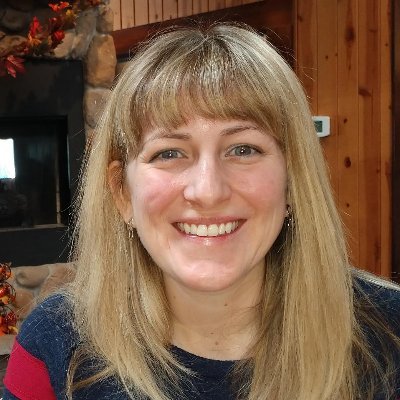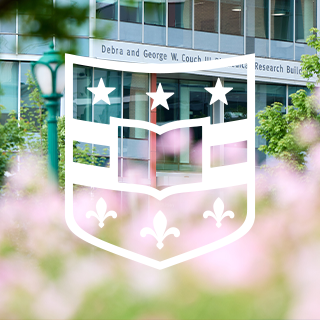
Tychele Turner
@tycheleturner
Followers
1K
Following
5K
Media
194
Statuses
2K
Thank you to @NIMHgov for funding my R01 on noncoding variation in neurodevelopmental disorders! @TNTurnerLab @WashUGenetics #genetics #genomics #autism So Very Happy!!! https://t.co/aWu1x1nqij
13
3
94
@HumanGenomics @jacksonlab @MMRRC 9/9 One more reason it is cool to publish with @BiologyOpen: they plant a tree for every article. Ours is Tree #14120 a pedunculate oak (Quercus robur) in the Derbyshire, UK forest. 🌳 Thoughtful, tangible stewardship. Map:
forest.biologists.com
0
2
3
@HumanGenomics @jacksonlab @MMRRC 8/9 Why this matters: enhancers are key to tissue- and stage-specific gene regulation, yet causal, in vivo evidence remains limited. This model provides a reusable platform to probe regulatory variation → expression → phenotype. We welcome potential future collaborations and
1
0
0
@HumanGenomics @jacksonlab 7/9 Community resource: we deposited the line with @MMRRC so others can build on it whether for enhancer biology, EBF3 function, neurodevelopmental mechanisms, or comparative regulatory genomics. Access details here:
1
0
0
@HumanGenomics @jacksonlab 6/9 Collaboration thread: shout-out to David Gorkin (for the connection), Kevin Peterson at The Jackson Laboratory for molecular collaboration, and Jacqueline White at JAX for expert interpretation of phenotypes generated via the KOMP pipeline. The project is stronger because of
1
0
0
@HumanGenomics 5/9 Process notes: learned a lot, scientifically and operationally, while developing an in vivo enhancer model under pandemic-era constraints. Partnering with @jacksonlab Services was essential; in 2020, they were among the few positioned to execute and willing to partnership
1
0
0
4/9 Origins: this effort began in 2020 as our lab’s first in vivo foray into enhancer biology. It builds on our earlier @HumanGenomics study identifying VISTA hs737 in the context of simplex autism, and on the publicly curated VISTA entry for this element. Paper:
humgenomics.biomedcentral.com
Background Previous research in autism and other neurodevelopmental disorders (NDDs) has indicated an important contribution of protein-coding (coding) de novo variants (DNVs) within specific genes....
1
0
0
3/9 What’s inside the paper: * Model generation and distribution for community use * Long-read sequencing to confirm the intended genomic edit and local structure * RNA expression profiling to assess regulatory consequences * Comprehensive phenotyping to connect genotype
1
0
0
2/9 What we built: a mouse knockout targeting the highly conserved region orthologous to the human VISTA enhancer hs737 near EBF3. To our knowledge, this is the first loss-of-function characterization of this element in vivo; testing enhancer function directly rather than
1
0
0
1/9 Excited to share our new paper in @BiologyOpen: “Generation and characterization of a knockout mouse of an enhancer of EBF3.” This collaborative project spans model generation, multi-omic characterization, and community release. 🧬🐭 @WashUGenetics @jacksonlab
journals.biologists.com
Summary: This study focuses on the generation and initial characterization of a knockout mouse for a region of noncoding, regulatory DNA that was previously implicated in autism.
1
3
10
Join @WashUGenetics this Thursday Nov. 6 @12pm in Connor Auditorium when Jun Wu, PhD @leo_jwu presents “Curious Cases of Pluripotent Stem Cell Adaptations”, hosted by Xiaoxia Cui, PhD
0
2
6
Wow, @github contributions look different today. No green. It looks like corn 🌽 Happy #Halloween!
0
0
4
11/ We are just getting started. The 9P-ARCH network is actively pursuing next steps to better understand these syndromes and their biology. Thanks to all the families, collaborators, team members, and current funders and future potential donors who are making this all
0
0
0
10/ Conclusions 🌍 We introduced the 9P-ARCH network This study is the largest & most comprehensive genomic analysis of 9p-related syndromes to date.
1
0
0
9/ Unexpected finding: 🧬 Individuals with 9p deletion syndrome show excess mitochondrial genome copy number. Raises new questions about mitochondrial involvement in these syndromes.
1
0
0
8/ Gene prioritization Using human variation + spatial transcriptomics, we identified 24 genes driving most cases of 9p deletion syndrome (83% of individuals).
1
0
1
7/ We found two late-replicating regions where most structural variant breakpoints occur. ➡️ Suggests replication-based issues are a major driver of structural variant formation in 9p deletion syndrome.
1
0
1
6/ Results 🔍 First detailed look at the genomic architecture of 9p syndromes. ✅ Found shared features & differences across individuals. 💻 Built a machine learning model to predict 9p deletion syndrome from WGS gene copy number data.
1
0
1
5/ We also updated denovo-db to v1.8 and it now includes 1,131,762 de novo variants from 72,794 trios. We tested for enrichment protein-coding de novo variants in genes on 9p using data from denovo-db. Using our computational tools HAT and acorn, we also generated high-quality
1
0
1
4/ We also built a new open-source computational tool: DiamondsDenovo 👉 Detects enrichment of de novo variants in genomic regions.
1
0
1
3/ Methods We formed the 9P-ARCH network (Advanced Research in Chromosomal Health: Genomic, Phenotypic, and Functional Aspects of 9p-Related syndromes). 📊 100 individuals from families with 9p syndromes. 🔬 WGS for all, plus other genomic technologies for subsets. 🧮 Gene
1
0
1




